If you’ve been cruising around the nerdy parts of the internet (ie. all of the internet) recently, you may have run into this Japanese word:
Tsundere.
A Google search will bring a quick definition, but if you dig a little deeper you’ll find the tsundere meaning applies to a broad spectrum of personalities and behavior. On top of that, it has spawned a whole subset of words like yandere, dandere, kuudere, and more. It’s gotten so popular there are even products and events celebrating the tsundere idea (there are even tsundere sharks, wtf?). Suddenly understanding this word doesn’t seem so simple.
Lucky for you, Tofugu has done the heavy lifting and laid out the results below. Read on to learn what tsundere means, where it came from, and why it’s so attractive. But don’t get the wrong idea. I didn’t write this for you or anything. Baka!
- Tsundere Meaning
- Where Did Tsundere Come From?
- Why is Tsundere Attractive?
- How to Act Tsundere
- Tsundere Cafe
- The Most Popular Tsundere Characters
- Tsundere in Real Life
- Other ~Dere Words
- Discovering Something Deeper
Tsundere Meaning
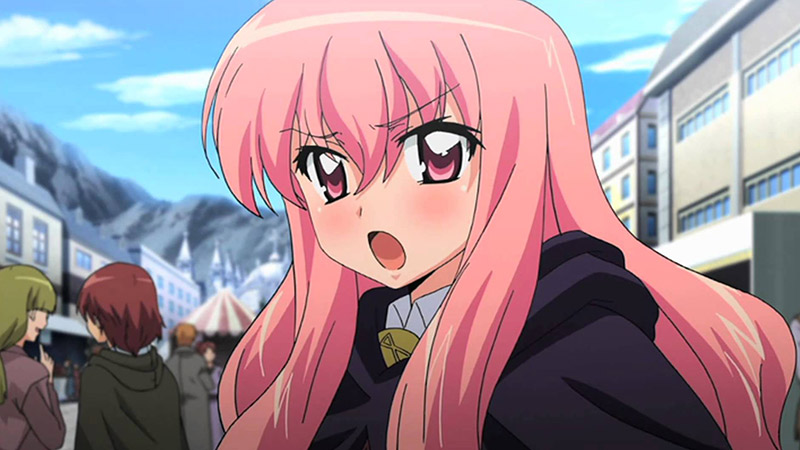
“What!? You don’t know what tsundere means? Are you stupid? Why don’t you look it up yourself?
“Well….since you came all the way to Tofugu…I could teach you…(blush)”
The above is a good example of tsundere behavior. The first paragraph demonstrates “tsun.” The second demonstrates “dere.” They combine to form, tsundere つんでれ/ツンデレ, a combination of two Japanese onomatopoeia:
- tsun tsun つんつん/ツンツン
- dere dere でれでれ/デレデレ
Both words describe different attitudes. Tsun tsun refers to someone who acts cold, blunt, or curt. The onomatopoeia itself is actually the sound of someone sticking their nose up in the air, or turning away in disgust.
On the other hand, dere dere describes someone who is affectionate or lovey-dovey. You may have seen dere dere people in a relationship. They’re cuddly and use pet names with each other.
So “tsundere” describes someone who is “tsun-tsun” at first, but eventually warms up and becomes “dere dere.” Don’t mistake this for some kind of split personality disorder. It’s usually a gradual change, or a change triggered by a specific person or event. Actually, it's is applied broadly to any character who is sometimes icy and sometimes warm. In English you might call it “running hot or cold.”
If you’re trying to figure out the tsundere pronunciation, check out our guide to hiragana, which will teach you how to read and pronounce Japanese.
This broad application makes it tough to nail down the definition of tsundere. To make things a little easier, let's break it down into four character description categories:
- A character who wants to be dere dere toward their secret love, but for some reason can’t reveal their feelings. So they act tsun tsun in front of them.
- A character who acts tsun tsun to everyone but becomes dere dere around a specific person (usually a person they love).
- A character who acts tsun tsun at first, but gradually opens up.
- A character who is blunt and harsh, but sometimes becomes generous or kind.
Beyond this, the terms has been applied to all sorts of characters with varying degrees of tsun tsun and dere dere attitudes. Some even use tsundere to describe dere dere characters who sometimes act harshly. This seems like a stretch to me, almost opposite. But it goes to show how popular the term has become and how easily people apply it to their favorite characters.
Where Did Tsundere Come From?

Tsundere as an idea and storytelling device has been around for centuries. Katherina from Shakespeare’s The Taming of the Shrew is an example. Comiket organizer Koichi Ichikawa calls Lum from 1978’s Urusei Yatsura the first tsundere character in manga. Others give that title to Heckett from Osamu Tezuka’s 1963 manga Princess Knight. But the question isn’t where the idea came from, but the word.
Tsundere was initially used to describe female characters in gyaruge ギャルゲ (gal games), a type of dating simulator. In gal games, your obstacle is the sim girls’ attitude toward you (tsun tsun). The goal is to achieve their affection (dere dere).
In 2002, players were discussing one such gal game on a Japanese message board. According to Junichi Togashi from the Department of Japanese Literature at Daito Bunka University, the idea first appeared on an internet forum called ayashii waarudo @ zantei あやしいわーるど@ 暫定 (ayashii world @ zantei). Forum users were discussing a gal game called Kimi ga Nozomu Eien which featured a character named Ayu Daikuuji ( 大空寺あゆ). On August 29,2002, a user posted a message declaring how much he liked interacting with her personality saying, tsun tsun dere dere ga yoi ツンツンデレデレが 良い, or “tsun tsun dere dere is good.” A few months later on December 26, 2002, a message board user posting about Haruhi Sakuma( 佐久間 晴姫) from Akizakura no Sorani ( 秋桜の 空に) called her “tsundere.” And so the word was born. Soon after the word became common in the Japanese online dating sim community, eventually spilling over to popular non-dating sim message boards like nyuu soku VIP ita ニュー 速VIP 板 (Breaking News VIP Board) in 2005. There was no going back. It began making its way through the Japanese online community.
In 2006, media outlets all over Japan started using tsundere and it was nominated Buzzword of the Year. It didn’t win, but the nomination cemented it in the Japanese lexicon.
And that’s how the modern term tsundere came about. All done. End of story.
But wait!
In 2011, Kazuo Koike, famous manga writer of “Lone Wolf and Cub” and “Golgo 13,” sent a tweet claiming he created the word “tsundere.” According to the message, he used it in a manga called "koukousei burai hikae 高校生無頼控" in 1972.
The tweet reads:
Certainly, “tsundere’ is the word I used in the manga called "koukousei burai hikae 高校生無頼控" around 1972 (about 39 years ago). Then, that word is brought back to life again…characters are really interesting, aren’t they?
Kind of a vague statement, Mr. Koike. Apparently, someone on Twitter described one of his characters as tsundere, and he was responding to that while off-handedly implying he created the term. If this is true, then tsundere existed way longer than anyone thought. Let’s look at the manga in question:

Here’s a translation of the dialogue:
- 卓子の 奴!おれたちにはツンツンしてるくせに あんなイモ 野郎とデレデレしやがって!
- “Damn it! Why is Takuko so attentive to that potato bastard, but always so aloof with us?”
Though Koike-san claims he came up with the word "tsundere", that isn’t what he used. It was “tsun tsun” and “dere dere” in the same sentence. Kinda close, but not really the same. Many rejected Koike’s claim to the origin of the word. But still some praised him saying, “That’s my Koike-sensei!” ( 流石 小池 先生!)
Why is Tsundere Attractive?
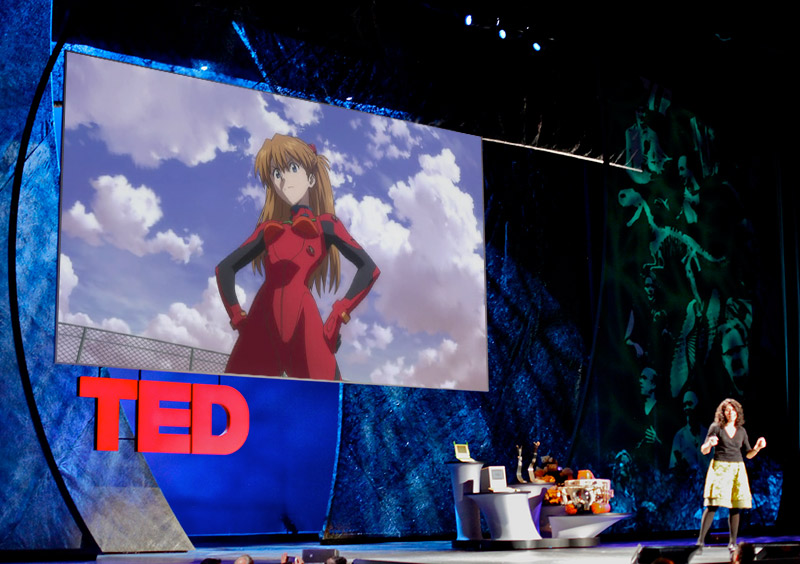
Now that tsundere as a word and idea are popular, this begs the question, why is it so attractive? Sure, in fiction it creates a fun dynamic for stories. But can people actually be attracted to this kind of personality? Amazingly, two research studies support the power of its mystique.
The first was conducted by Elliot Aronson and Darwyn Linder at the University of Minnesota in 1964. They had subjects meet with a confederate (someone secretly in on the experiment). The subjects and confederates interacted for a period of time. After the interaction, the subjects were allowed to listen in on a conversation between the researchers and their confederate partners. With the subject listening in, the confederate would talk about and evaluate the subject in 1 of 4 ways:
- They would evaluate the subject positively
- They would evaluate the subject negatively
- They would initially evaluate the subject negatively but eventually evaluate them positively
- They would initially evaluate the subject positively then eventually evaluate them negatively
The subjects were then asked to evaluate their partners after hearing their opinions of them. Surprisingly, option number three was evaluated best. The subjects liked their partners best when they started out bad-mouthing them, but ended with kindness.
Over 10 years later, in 1975, Gerald Clore conducted a similar experiment at the University of Illinois. Clore showed video tapes to 180 female and 158 male college students. The tapes featured a woman (A) and a man (B) conversing without sound. The conversation played out four times, each time the woman (A) performing different non-verbal behaviors:
- A is kind to be B
- A is kind to B but then becomes cold
- A is cold to B but then becomes kind
- A is cold to B
The students were then asked, of the four scenarios they witnessed, in which was the male (B) most attracted to the female? The overwhelming response was scenario 3, where the woman was initially cold, but warmed up over time.
These studies confirm our suspicions. Tsundere behavior is attractive! But why? The answer is the gain-loss principle.
The principle was first put forth by Aronson and Linder in their 1964 experiment. It states that a person feels more or less toward someone depending on their baseline expectations. If the baseline expectation is “this person hates me,” there will be more attraction when the normally ornery person gives a compliment. That’s because there’s been a “gain” in baseline expectation. And this gain feels psychologically rewarding. It’s as if the grumpy person has been “won over.”
How to Act Tsundere
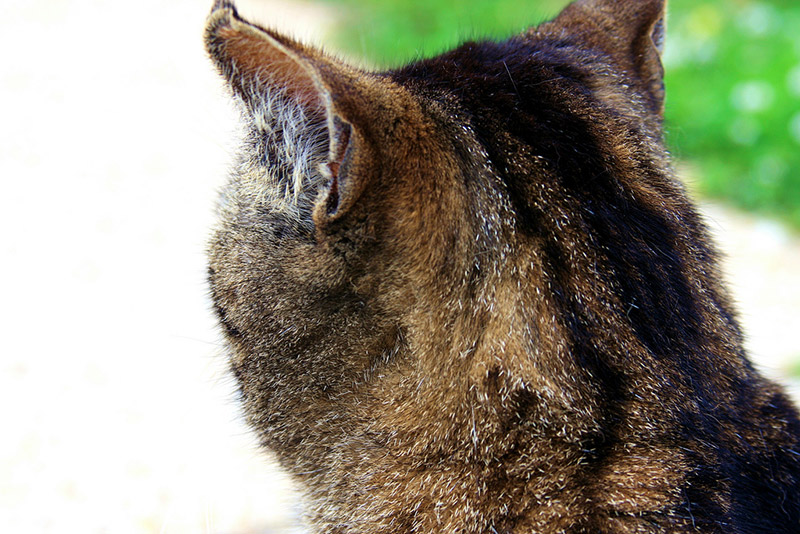
Now that you’ve learned how effective tsundere behavior can be, why not try it yourself? Because it could potentially leave you alone and friendless, that’s why. Hot-and-cold behavior may work in the short term, but over time it can push people away if you don’t become dere dere and stay that way.
But if you want to try it anyway, you need to properly mix the mean with the sweet. It’s a tough balance to strike. Luckily, we’ve got a few things you can try when crafting your new tsundere personality. (Seriously though, don’t be this way on purpose.)
Acting Tsun Tsun
To properly become tsundere, you need to start with an egotistical mean streak. Try these actionable steps toward assholery.
- Verbally Abuse: Probably the most common (and easiest!) way to act tsun tsun. You love someone and don’t want them to know it. So call them an idiot. Or baka. Tell them how annoying they are. Tell them to shut up any time they open their mouth.
- Shun: Ignoring someone is a great way to show you’re tsun tsun. In fact, it’s the very definition of the word (turning away in disgust). Just make sure the person you love is trying to interact with you in some way. Ignoring someone who doesn’t know you exist doesn’t carry the same weight.
- Complain: Specifically, complain about your secret love. Even when they’re not around. You need to make sure everyone around you knows your distaste for that beautiful baka idiot.
- Don’t Hate: Don’t confuse tsun tsun behavior for hate (though it’s easy to cross that line). The person you love is a mild annoyance to you. A buzzing fly. But they don’t fill you with such rage that you’d push them down a flight of stairs and leave them to die.
- Be Generally Unlikeable: Though some tsundere people are only tsun tsun to those they love, most of the time they make everyone put up with their crap. Consider making this part of your personality with everyone you encounter.
Acting Dere Dere
Of course, acting tsun tsun is not enough. Without the dere dere, you’re just a jerk. Adding the dere dere makes you a misunderstood jerk. It gives your tsundere meaning.
Once you’ve degraded the person you love, it’s time to confuse the hell out of them with kindness, thus making them love you back.
- Give a Gift: This is a favorite tactic of tsundere people. Give the person you love a gift, but claim you’re giving it to everyone or it’s a gift for people you consider the stupidest.
- Help/Train: Offer to help your secret crush with their homework, physical training, or life issues. Help them with any problem they might have. Of course, claim you’re only doing it for some made-up reason, like you hate the person they’re competing against or you want them to be less of an idiot.
- Heal/Care For: This might be the best position a tsundere can be in. When your secret love is hurt, nurse them back to health. Try not to be too doting though. Dump a lot of alcohol on their scrapes. Be rough when setting their broken bones. And criticize them for getting hurt in the first place.
- Defend: If your love is being bullied, defend them from the bully (if you’re the fighting type). Of course, criticize them for not defending themselves and tell them you only fought the bullies because you like punching people. Then punch them.
- Be Nice in Private: Sometimes your dere dere can be a total flip-flop. Be mean as hell to your crush in public, but in private act nice. Just be sure act mean again as soon as other people come around.
Tsundere Products
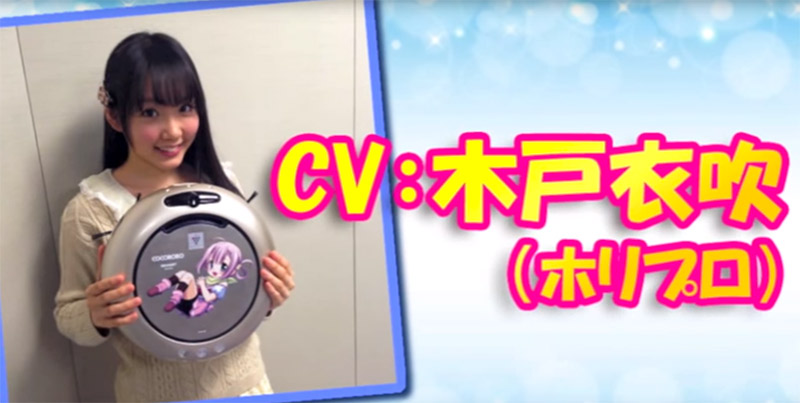
As soon as something becomes popular, companies will be ready to make money off it. Here are a few tsundere products that are initially cold, but warm up as you use them. (Editor’s note: Icy/Hot, Hungry Man dinners, and car engines on a frosty Canadian morning are not considered tsundere products.)
SEGNITY Tsundere Mobile TV
Have you ever wished Siri treated you like crap? Or do you want the voice on your GPS to criticize your mistakes? Then you’re in luck! (and also insane) Defunct Japanese tech company e-Revolution has a product for you.
In 2006, a mobile audio/video broadcasting service called 1seg began transmissions in Japan. They sent out a special kind of television broadcast that could only be picked up by special mobile receivers. e-Revolution made one such mobile TV called the SEGNITY. But something set it apart from other TVs on the market. This was a tsundere TV. When you start using it, the voice speaks with tsun tsun arrogance. Of course, over time, it slowly changes to “dere dere.”
For example, if you turn on the SEGNITY TV, the voice will get upset and say, “You aren’t thinking of watching TV, are you?” or “It’s so noisy!” But the more you use the TV, the friendlier the voice becomes. Eventually, it will become cute and say, “Why don’t we watch TV together?” Congratulations! You’re dating a portable television.
Tsundere Karuta
Karuta is a traditional Japanese card game. And this is a tsundere version of that traditional game. On each card in these Karuta decks, there’s a hot/cold phrase. Each deck comes with an audio CD of all the phrases recorded by Rie Kugimiya, the voice actress considered the "Queen of Tsundere."" Check out the video above for examples. Order the deck on Amazon with accompanying CD, if you like mixed signals with your traditional Japanese card playing experience.
Tsundere Moe Sake
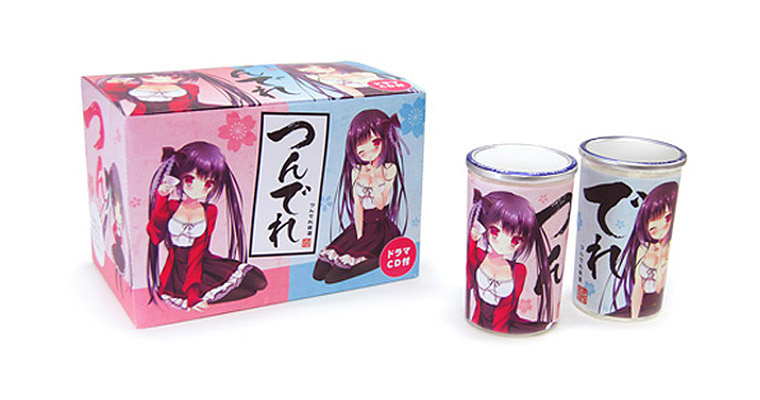
This is a two pack of sake. One is dry (tsun) and the other is sweet (dere). You can blend them together to make the perfect tsundere sake. It also comes with a CD so you can fall in love with an invisible person while you get drunk. Available on Amazon.
COCOROBO Tsundere Talking Robot Vacuum Cleaner
And now, the crown jewel of tsundere products. A tsundere robot vacuum cleaner. Imagine a hot/cold-emotioned Roomba you can talk to. This one is more specific though. It’s a tsundere younger sister. So she’ll act cold/warm, she’s a vacuum cleaner, and she’s related to you. Take that for what you will. No matter what, I’d be mad if I got woken up by this thing (Watch the youtube video to see what I mean).
What makes this the ultimate tsundere product? The price is really tsun tsun: ¥148,000.
Tsundere Cafe
Japan has had maid cafes since as far back as 2003. But as the idea of this personality type became popular, the inevitable tsundere cafe opened.
In a normal maid cafe, the waitresses wear maid uniforms and treat you sweetly. The tsundere cafe is the same but the waitresses attitudes are tsun tsun. When you order, they may say things like mendokusai めんどくさい (what a pain in the ass). No matter what you order, they’ll bring whatever they want, like a jar full of coffee beans or plain tap water. And you still have to pay.
There’s tsun tsun, but where’s the dere dere? It comes at the end. When you pay and leave, the waitresses act clingy and ask where you’re going and if you’ll be back soon.
Right now, there aren’t any permanent tsundere themed cafes. Rather younger-sister themed maid cafes hold tsundere events, thus transforming temporarily. The event-holding cafe featured most on Japanese TV is Nagomi (see the video above). Comedians frequent these tsundere events because it makes for good material. Three comedians, Kazutoyo Koyabu, Kobayashi Kendo, and Messenger Aihara, visited Nagomi and got one of the maids to laugh. But best of all is when comedy legends Downtown and Yoiko visited:

Though there aren’t any permanent tsundere cafes yet, there probably will be soon. Between internet and TV coverage, the idea is getting a lot of exposure. For now, there are maid cafes that have tsun tsun treatment you can order, and they take it to the next level.
If verbal abuse at Nagomi isn’t enough for you, head over to Cute Room or Cafe and Kitchen Cos-Cha, both in Akihabara. These cafes offer a slap in the face, for a price. Cos-Cha’s slap comes with a twist. After you pay, the maid chooses what goes in your drink. If you don’t drink it all at once, she slaps you good.
If face slapping still leaves you craving more abuse, try Cafe CC Ocha in Nipponbashi. They have an ¥1800 butt kicking on their secret menu. The maid of your choice will command you to get on all fours and admit you’re a pervert. Then she’ll kick you in the ass. The menu item is called urutora tsundereedaa ウルトラツンデレーダー (Ultra Tsundereder).
The idea of tsundere cafes is getting so popular, there’s even a song about them called “tsundere cafe e youkoso ツンデレcafeへようこそ☆” meaning “Welcome to Tsundere Cafe.” Apparently, it’s a super difficult song to perform in Taiko Drum Master.
The Most Popular Tsundere Characters
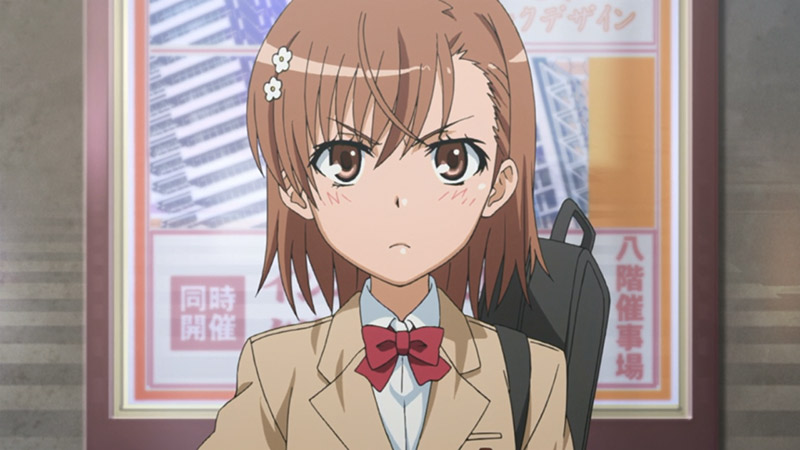
Of course, people have begun debating the best tsundere characters. Most claim the best were those played by voice actress Rie Kugiyama. She was dubbed “Queen of Tsundere” by her fans for her portrayal of such stuck-up/tender roles as Louise from The Familiar of Zero, Nagi Sanzenin from Hayate the Combat Butler!, and Taiga Aisaka from Toradora!
But the ultimate list was compiled by Charapedia. They surveyed 1000 anime fans in Japan asking their favorite tsundere characters and came up with a list. Here are the top 10:
- Mikoto Misaka 御坂 美琴(To Aru Series/とあるシリーズ) voiced by Rina Satou
- Hitagi Senjougahara 戦場ヶ原ひたぎ(Monogatari Series/ 物語シリーズ) voiced by Chiwa Saitou
- Kirino Kousaka 高坂 桐乃(Ore no Imouto ga Konna ni Kawaii Wake ga Nai/ 俺の 妹がこんなに 可愛いわけがない) voiced by Ayana Taketatsu
- Maki Nishikino 西木野 真姫(Love Live!/ラブライブ!) voiced by Pile
- Chitoge Kirisaki 桐崎 千棘(Nisekoi/ニセコイ) voiced by Nao Touyama and Haruka Tomatsu
- Shana シャナ(Shakugan no Shana/ 灼眼のシャナ) voiced by Rie Kugimiya
- Taiga Aisaka 逢坂 大河(Toradora!/とらドラ!) voiced by Rie Kugimiya
- Louise ルイズ(The Familiar of Zero/ゼロの 使い 魔) voiced by Rie Kugimiya
- Asuka Langley Soryu 惣流・アスカ・ラングレー (Neon Genesis Evangelion/ 新 世紀エヴァンゲリオン) voiced by Yuuko Miyamura
- Iori Minase 水瀬 伊織 (THE IDOLM@STER) voiced by Rie Kugimiya
Wow, Rie Kugimiya is in the top 10 four times! But she didn’t break the top 5. Does that mean she’s not the Tsundere Queen anymore? Will she be considered for roles in anime in the future?
Tsundere in Real Life

Naturally Japanese people eventually began looking for tsundere in their daily lives. The popular Japanese news site Mynaviwoman asked 100 working men if they’d encountered real life women who had this hot/cold personality. According to the survey, only 8.5% of men said yes. Those who said yes, were asked what the women were like. Below is a selection of translated answers:
“She completely ignored me at work, but in private stuck to me all the time. I wasn’t offended, but I kept thinking ‘don’t ignore me.’ ” (35-year-old precision machine salesman)
“She told me she was not interested in me at all, but always took the seat beside me and got close when she talked to me.” (33-year-old precision engineer)
“She was a really strong woman, but I saw tears in her eyes one day. My heart fluttered. She normally wasn’t ‘dere dere’ at all. If you can be patient with a girl who is usually ‘tsun-tsun,’ I totally recommend a tsundere girl… especially if you’re a masochistic guy.” (22-year-old IT engineer)
Although some men said they liked “tsundere” girls, others said the tsun tsun treatment was awful. One guy described it like this:
“She barely ever changed her facial expression and her words and behavior were abrupt. She definitely gave me a bad first impression. If I had to pick something good about her, it would be she’s good at saying one thing and doing another. I mean, she was good at bluffing.”
Have you met "tsundere" women or men in your life? Did you like their behavior? All the behavior described here sounds extreme. But I suppose we all have our reasons for acting certain ways in certain situations. There are so many factors behind peoples’ behavior, it’s hard to say.
Other ~Dere Words
Now that we’ve learned the meaning of tsundere and so much more, I think you’re ready to enter the vast landscape of “the other ~dere words.” Tsundere is only the tip of the iceberg. After this word became popular, people in Japan started creating all new ~dere words. There are a lot of labels for personality types that start out one way, but end dere dere.
Dandere ダンデレ
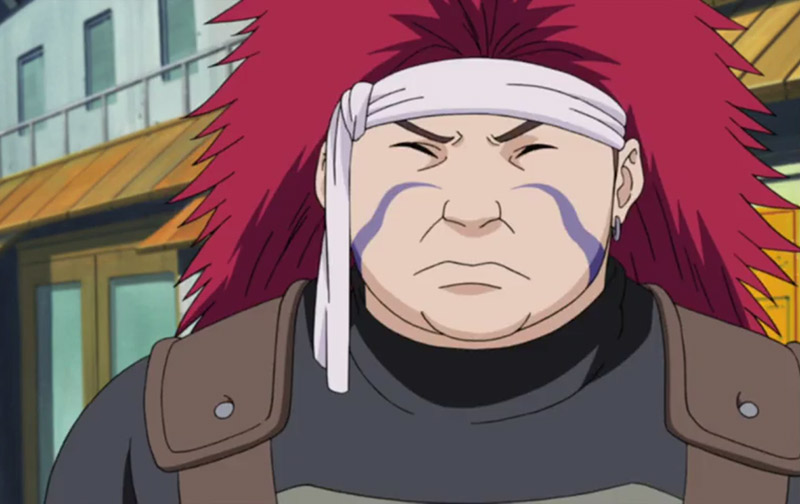
dandere だんでれ/ダンデレ is actually a Japanese homophone. This same word has two meanings.
The first “dandere” is made up of these two words:
- dandii だんでぃ/ダンディ
- dere dere でれでれ/デレデレ
Dandii comes from the English word “dandy.” Dandy may feel antiquated to westerners, but it’s still used in Japan to describe manly and sophisticated men. David Beckham and George Clooney are both considered “dandies by Japanese people. Dandies look cool and don’t seem like the type to become affectionate. So if George Clooney were to use baby talk to dote on a cute puppy, that would make him dandere.
The second “dandere” is made up of these two words:
- danmari だんまり/ダンマリ
- dere dere でれでれ/デレデレ
“Danmari” is the noun form of the verb “damaru 黙る”, which means to be quiet. So this dandere describes someone who is quiet but actually feels “dere dere” in their hearts. If you really liked someone in middle school, but never talked to them (or anyone), then you were dandere. Oh, middle school. The most secure and non-turbulent time of life.
Examples of Dandere:
- Hayato Ijuin (a.k.a. Falcon or Umibouzu) in City Hunter [Dandy + Dere]
- Chouza Akimichi in Naruto [Dandy + Dere]
- Hinata Hyuuga from Naruto [Danmari + Dere]
- Rei Ayanami in Neon Genesis Evangelion [Danmari + Dere]
- Sakaki from Azumanga Daioh [Danmari +Dere]
Kuudere クーデレ

If you’re calm and composed, but have a heart full of passion, then you might be kuudere くーでれ/クーデレ. It’s made up of these two words:
- kuuru くーる/クール
- dere dere でれでれ/デレデレ
“Kuuru” comes from “cool” in English. This idea overlaps with both the “dandy” and “quiet” dandere types. A kuudere person is cool but also full of affection bottled up and stuffed deep inside. It describes a few different kinds of cool personalities:
- Someone who acts like they’re not interested in other people except for one they like. To that specific person, they become dere dere.
- Someone who likes a certain someone, but when that person comes around, they become shy and act cool.
- Someone who acts cool at first, but over time they become more honest and affectionate.
- Someone who acts cool but says or does cheesy or corny things.
Examples of Kuudere:
- Mio Akiyama in K-On!
- Rei Ayanami in Neon Genesis Evangelion
- Minami Iwasaki in Lucky Star
- Kaori Kanzaki in A Certain Magical Index
- Sinon/Sino Asada in Sword Art Online
- Yuki Nagato in The Melancholy of Haruhi Suzumiya
Yandere ヤンデレ

Have you ever been in love? Like crazy in love? Like so crazy in love you would kill anyonewhogetsinthewayofyourloveEVENTHELOVEITSELF!!!?
Then you might be yandere やんでれ/ヤンデレ. It’s made up of these two words:
- yanderu 病んでる/ヤンデル
- dere dere でれでれ/デレデレ
Yanderu is written “ 病んでる” in kanji. It means “to be sick or depressed.” But in this case, “yanderu” means to be mentally ill. It usually describes someone deranged but still affectionate. But sometimes it can describe someone who fell in love so hard it made them crazy. Either way, a yandere person is usually dangerous. They’ll do anything (mostly killing) to keep other people away from their love. If they can’t keep people away, they’ll kill their love so no one else can have them. Makes sense, right?
Examples of Yandere:
- Minatsuki Takami in Deadman Wonderland
- Palm Siberia in Hunter☓Hunter
- Kirika Kure in Puella Magi Madoka Magica
- Sekai Saionji in School Days
- Shion Sonozaki in Higurashi When They Cry
Darudere ダルデレ

If Gudetama showed sudden burst of passion for someone you could call him darudere だるでれ/ダルデレ. It’s made up of these two words:
- darui だるい/ダルイ
- dere dere でれでれ/デレデレ
Darui means weary, sluggish, or tiresome. It describes the feeling of being too tired to do anything. You can’t be bothered. Thus darudere people are mostly lazy, but sometimes passionate. For example, here’s a conversation between a darudere girlfriend and normal boyfriend from the book tsukue no ue no darudere kanojou 机の 上のダルデレ 彼女 (My Darudere Girlfriend on the Desk).
Girl:「………… おんぶ」
Boy: 「 いや、 歩こうぜ?」
Girl:「………」
Boy:「…… わかったよ……」
Girl: Piggyback ride! (Asking him to put her on his back)
Boy: C’mon, let’s walk, okay?
Girl: …..
Boy: Alright…
Fun fact: Darudere is sometimes elongated into “darushimudere” referencing Dhalsim from Street Fighter II. Because why not?
Examples of Darudere:
- Kyonko in The Gender-Flip of Haruhi Suzumiya
- Amu Hinamori in Shugo Chara!
- Yamato Nagamori in Lucky Star
Sadodere サドデレ

If you love to tease, but have a secret heart of affection you might be sadodere さどでれ/サドデレ. It’s made up of these two words:
- sado さど/サド
- dere dere でれでれ/デレデレ
Sado comes from an English word “sadistic.” But Japanese people use it to describe someone who likes teasing others. Usually the term “esu エス”, from the S in “sadistic” is used. So a person who is teasing someone incessantly is acting “S.” Thus a sadodere person loves to tease, but deep down they are bursting with dere dere love.
Examples of Sadodere:
- Kanade Suzutsuki in Mayo Chiki!
- Tsukasa Ayatsuji in Amagami
- Dokuro Mitsukai (aka Dokuro-chan) in Bludgeoning Angel Dokuro-chan
- Chizuru Akaba in Student Council’s Discretion
Bakadere バカデレ
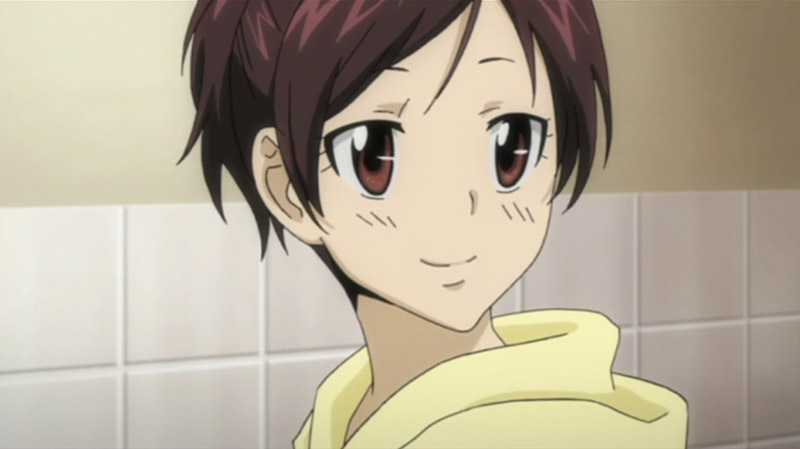
If you have trouble doing anything smart or even talking good and kant tipe vere gud, but you’re filled with love, you may be bakadere ばかでれ/バカデレ. It’s made up of these two words:
- baka ばか/バカ
- dere dere でれでれ/デレデレ
Of course, if you’ve read our article about the meaning and history of baka, you know it means stupid. So bakadere is someone prone to stupidity, but sometimes very lovey-dovey.
Examples of Bakadere:
- Haru Miura in Reborn!
- Fuuko Ibuki in CLANNAD
- Cirno in Touhou Project
- Astraea in Heaven’s Lost Property
- Kinu Kanisawa in Tsuyokiss
Nyandere ニャンデレ
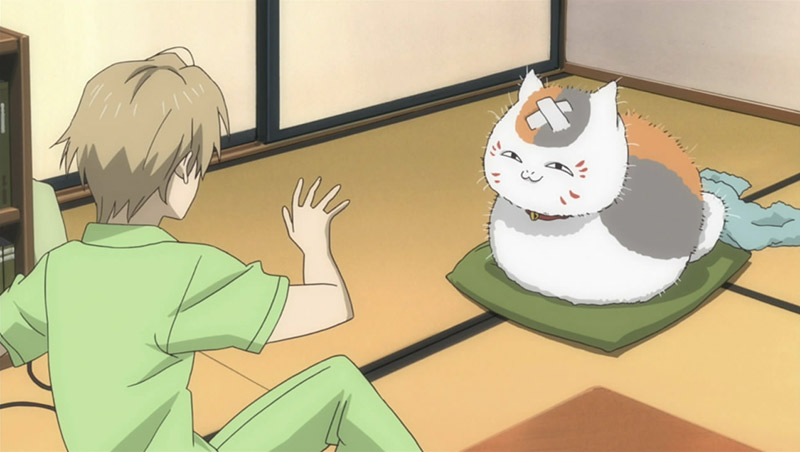
If you’re thinking “Dere Dere Garfield” you’re not too far off track. nyandere にゃんでれ/ニャンデレ is made up of two words:
- nyan nyan にゃんにゃん/ニャンニャン
- dere dere でれでれ/デレデレ
Nyan nyan is a Japanese onomatopoeia for a cat’s meow. So when combined with ~dere, it describes someone who snuggles up to their significant other using cat gestures. So there’s no dichotomy of personality like there is with other words in the ~dere family. Just a description of how someone is dere dere. But this isn’t the only use for nyandere.
Nyandere can also be used for someone who is usually cool but becomes dere dere only in the presence of cats. It also extends to tsundere people with neko-mimi (cat ears), cat girls or guys who are dere dere, cats who are dere dere, or cats who are tsundere. Basically anything that sometimes exhibits cat traits and sometimes exhibits affection.
Examples of Nyandere:
- Rin Natsume in Little Busters!
- Kaya in Gakkou no Kaidan
- Madara (aka Nyanko-sensei) in Natsume’s Book of Friends
- Tsumiki Miniwa in Place to Place
I’m a dog person, so I might be “wandere” rather than nyandere. wan-wan!U^ェ^U
Other ~dere Words
Technically you can make any ~dere words you want. I’d like to make “okodere” or “pundere.” They both mean the same thing. The “oko” is from “okoru 怒る” meaning “to get angry.” The “pun pun プンプン” is from the Japanese onomatopoeia for being angry. So both okodere and pundere mean a grumpy person who sometimes becomes dere dere.
What kind of ~dere word will you make? Tweet it at us with the hashtag #derelife. Who knows? You could make the next descriptor that affects all anime for years to come. ganbatte! がんばって!
Discovering Something Deeper
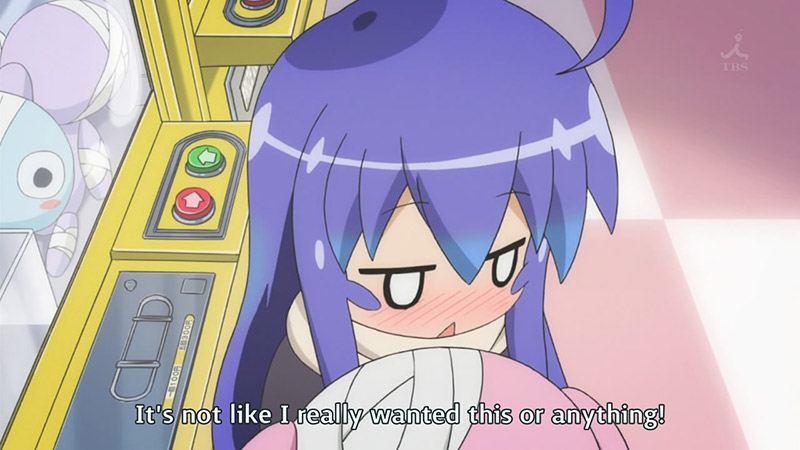
“What? Are you done reading already? I just got started telling you about tsundere. Maybe we can talk about obscure Japanese internet slang again some time soon, okay?” (blush)
No matter how you feel about this new obsession with an age old social quirk, it’s a great example of how we categorize our storytelling habits. At the very least you’ll be able to ace that online tsundere quiz you’ve been putting off.
Even though we are labeling characters as one thing or the other, we are also showing our patience with difficult exteriors. Tsundere and all the ~dere derivatives acknowledge our complexity as human beings. Whether someone is outwardly brash, quiet, cool, or stupid, inside they have a desire to give and receive love.
And if we’re able to practice this patience and understanding with anime characters, perhaps eventually we’ll do the same with the complicated people around us as well.
